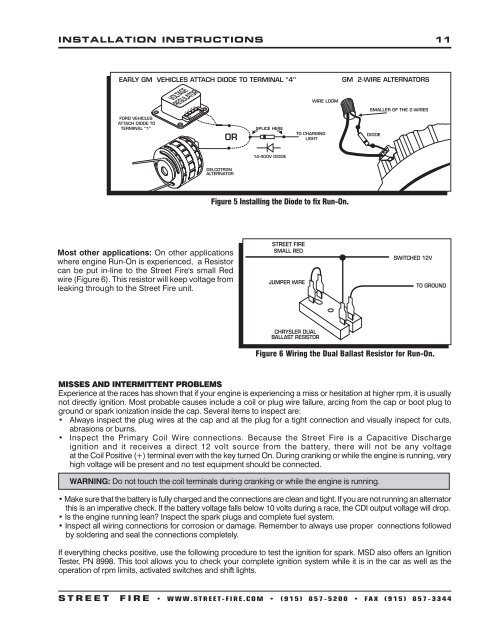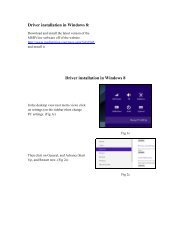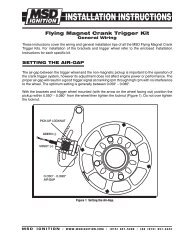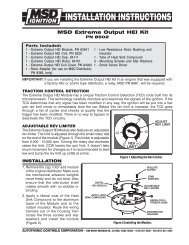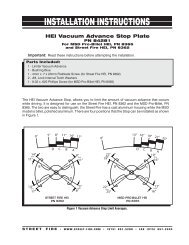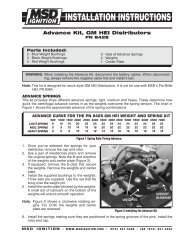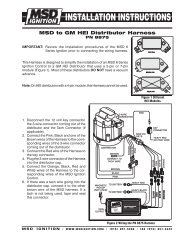Create successful ePaper yourself
Turn your PDF publications into a flip-book with our unique Google optimized e-Paper software.
INSTALLATION INSTRUCTIONS 11<br />
EARLY GM VEHICLES ATTACH DIODE TO TERMINAL "4"<br />
FORD VEHICLES<br />
ATTACH DIODE TO<br />
TERMINAL "1"<br />
1 2 3 4<br />
OR<br />
DELCOTRON<br />
ALTERNATOR<br />
Most other applications: On other applications<br />
where engine Run-On is experienced, a Resistor<br />
can be put in-line to the <strong>Street</strong> <strong>Fire</strong>'s small Red<br />
wire (Figure 6). This resistor will keep voltage from<br />
leaking through to the <strong>Street</strong> <strong>Fire</strong> unit.<br />
SPLICE HERE<br />
1A-400V DIODE<br />
WIRE LOOM<br />
TO CHARGING<br />
LIGHT<br />
Figure 5 Installing the Diode to fix Run-On.<br />
STREET FIRE<br />
GM 2-WIRE ALTERNATORS<br />
SMALLER OF THE 2-WIRES<br />
S T R E E T F I R E • www.STREET- FIRE.com • (915) 857-5200 • FAX (915) 857-3344<br />
DIODE<br />
Figure 6 Wiring the Dual Ballast Resistor for Run-On.<br />
MISSES AND INTERMITTENT PROBLEMS<br />
Experience at the races has shown that if your engine is experiencing a miss or hesitation at higher rpm, it is usually<br />
not directly ignition. Most probable causes include a coil or plug wire failure, arcing from the cap or boot plug to<br />
ground or spark ionization inside the cap. Several items to inspect are:<br />
• Always inspect the plug wires at the cap and at the plug for a tight connection and visually inspect for cuts,<br />
abrasions or burns.<br />
• Inspect the Primary Coil Wire connections. Because the <strong>Street</strong> <strong>Fire</strong> is a Capacitive Discharge<br />
ignition and it receives a direct 12 volt source from the battery, there will not be any voltage<br />
at the Coil Positive (+) terminal even with the key turned On. During cranking or while the engine is running, very<br />
high voltage will be present and no test equipment should be connected.<br />
WARNING: Do not touch the coil terminals during cranking or while the engine is running.<br />
• Make sure that the battery is fully charged and the connections are clean and tight. If you are not running an alternator<br />
this is an imperative check. If the battery voltage falls below 10 volts during a race, the <strong>CDI</strong> output voltage will drop.<br />
• Is the engine running lean? Inspect the spark plugs and complete fuel system.<br />
• Inspect all wiring connections for corrosion or damage. Remember to always use proper connections followed<br />
by soldering and seal the connections completely.<br />
If everything checks positive, use the following procedure to test the ignition for spark. <strong>MSD</strong> also offers an <strong>Ignition</strong><br />
Tester, PN 8998. This tool allows you to check your complete ignition system while it is in the car as well as the<br />
operation of rpm limits, activated switches and shift lights.


